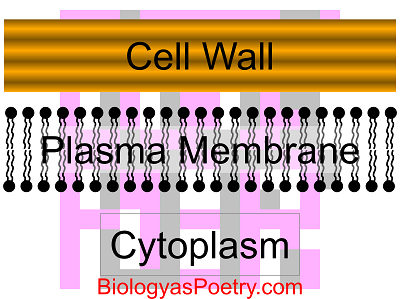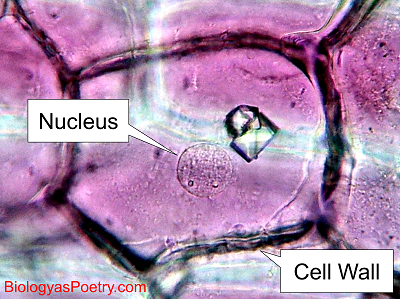∞ generated and posted on 2016.08.26 ∞
Somewhat rigid structure associated with many organisms that completely surrounds a cell's plasma membrane.
The cell walls in plants and many algae are composed of cellulose, that of fungi of chitin, and that of many bacteria a substance that is known as peptidoglycan.

Figure legend: Cell walls are found exterior to plasma membranes which, in turn, surround cytoplasms. Cell walls thus are able to hold back the expansion of cytoplasms and therefore of plasma membranes, allowing cells that possess cell walls to possess a higher osmolarity than the medium in in which they are suspended as well as an osmotic pressure exerted against their cell walls.

Figure legend: Wet mount of cell from purple onion as stained with iodine to bring out the cell nucleus. Note also the prominent cell walls.
Cell walls protect possessing cells against what is known as osmotic lysis, where water rushes into cells via osmosis, resulting in cytoplasmic expansion and plasma membrane rupture unless something holds back that expansion. That something is a cell wall.